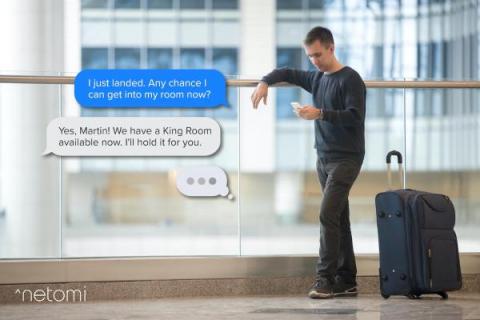Teams | Collaboration | Customer Service | Project Management
Customer Service
The Only Customer Acquisition Guide You'll Ever Need
It’s a no-brainer that customers are the fuel that keeps a business going. The success of a business hugely depends on how many customers you can bring in and at what cost. Here’s where customer acquisition and customer acquisition strategies come into play and influence how a business successfully gains new customers.
5 ways to create better employee experience in healthcare
An increasingly urgent challenge facing the healthcare industry is the shortage of skilled healthcare professionals. This is due to the general population getting older, an increase in chronic diseases, the impact of the pandemic and an ageing healthcare workforce. Compounding these trends is a work environment where siloed information, disconnected workflows and excessive paperwork can lead to frustrating experiences for employees and patients.
A Connected Hospitality Guest Experience, from Check-In to Check-Out
Does absence really make the heart grow fonder? For many travelers, anticipation and enthusiasm are high, and, for hospitality companies, the pressure to deliver an excellent customer experience is on. In fact, a recent survey found that 68% of Americans agree that they have a greater appreciation for travel because of experiences missed during the pandemic.
Customer Support: Definition, Importance and 6 Key Strategies
Many of us have experience interacting with customer support agents in various contexts, from streaming service subscriptions and car rental bookings, to online clothing purchases. For businesses worldwide, offering timely support across multiple channels and touchpoints is critical in today’s highly competitive and digital-first world.
Healthcare, Meet AI: How AI Can Help to Prescribe the Ultimate Patient Experience
The field of healthcare is changing dramatically, revisiting age-old concepts of how and where care can be delivered, as evident with the rise of telemedicine, online pharmacies, healthcare startups and other digital tools. Yet it is also an area in which a delicate dance is necessary, one that involves an adequate balance of technology and human interaction, as maintaining a human connection that is authentic as well as empathetic is critical.
Are CRM systems successful?
As the name suggests, CRM systems manage the relationships that businesses have with customers. From the first touchpoint to the last purchase, a CRM system will monitor, track and analyse each customer’s interaction.
How to evaluate chatbot performance
With more than two billion people regularly buying items online across the world, giving customers access to the service and answers they need via your website or social media is key to giving them a great shopping experience. Powered by artificial intelligence (AI), chatbots are software tools that can be used to answer customers’ basic questions or gather more information from them about their queries.
What is Omnichannel Customer Service & How to Deliver It
Telephone, email, live chat, or instant messaging. Today, you can interact with your favorite brands in multiple ways. This lets brands establish personal connections with customers and solve their problems faster. According to the Harvard Business Review study, over 70% of shoppers use more than one communication channel throughout the customer journey. Thus, businesses need to offer several channels to meet customers’ high expectations today.











